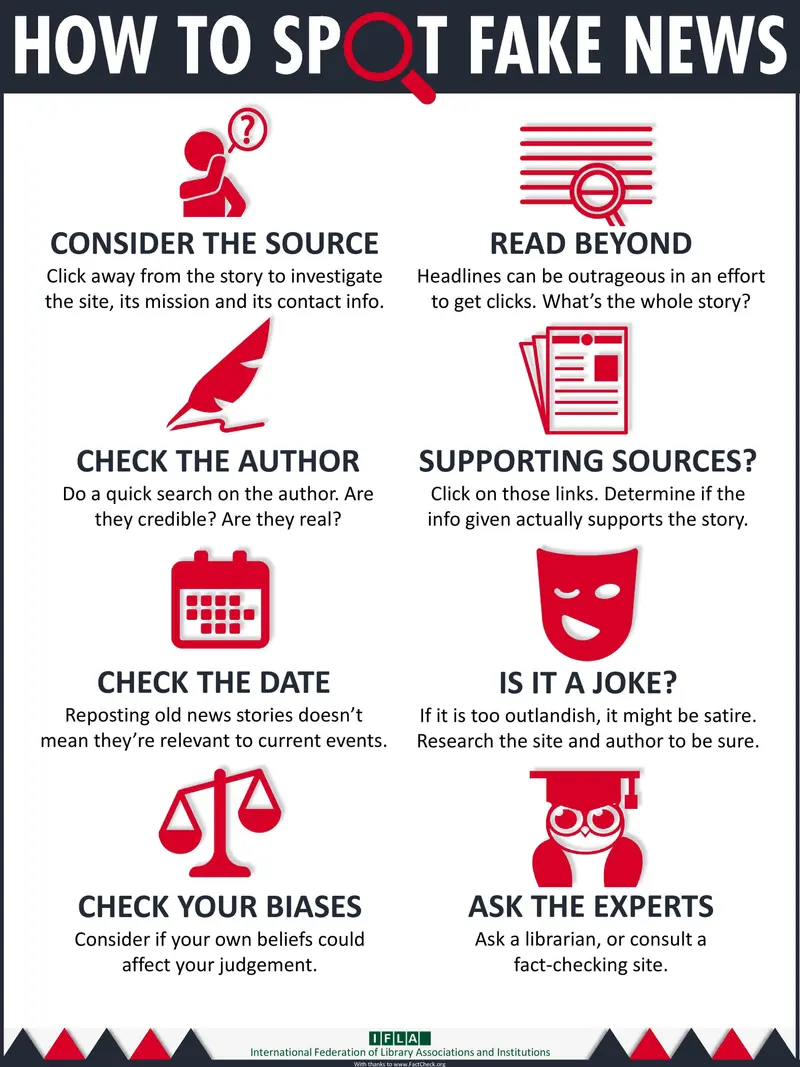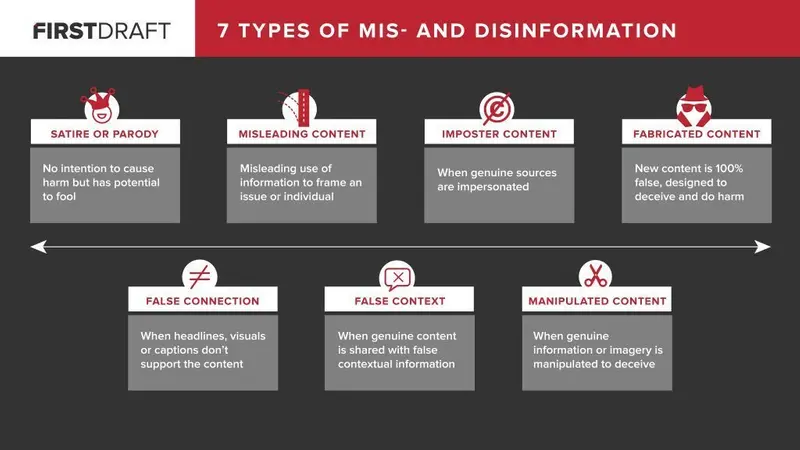It’s time to talk about misinformation. You already know it’s all around us, but understanding how to spot it and defend against it is one of the most important parts of being an informed and active voter.
What Is the Difference Between Disinformation and Misinformation?
- Disinformation is false information that is deliberately created and shared by people to knowingly cause harm — like, say, Russian actors trying to meddle in a U.S. election.
- Misinformation is also false information, but the people sharing it don’t realize it’s fraudulent — like, say, your uncle sharing a questionable meme on Facebook. Systematic disinformation campaigns can become misinformation when users go on to accept and share false messages without knowing it.
Top Trends in Misinformation and Disinformation in the 2022 Midterm Elections
As the COVID-19 pandemic first swept across the country in 2020, state and national election administrators scrambled to change rules to make voting as safe and accessible as possible. Voting by mail exploded. Early voting took off. In the fast-paced environment, misinformation flourished.
After the vote, lies about a stolen election spread like wildfire. When rules change quickly, it can be genuinely difficult to keep up with what is and isn’t allowed — and people who spread lies count on that.
The misinformation and disinformation leading up to the midterms falls into two broad categories, lies about elections themselves and lies about candidates’ and party’s platforms:
- Lies about voter fraud and election integrity continue to spread, even though voter fraud is extremely rare. Conspiracy theories about rigged voting machines, fraudulent votes, stuffed ballot boxes and more have led to confused voters inundating election officials with misinformed questions, according to a New York Times review of 2022 misinformation trends and consequences. These lies are thriving on platforms like TikTok, and the Brookings Institution reports that increasingly sophisticated misinformation and disinformation campaigns on social media platforms can suppress voting rights. A House Committee on Oversight and Reform report this year said that election officials are working hard to address misinformation and disinformation but need more resources and funding to do so effectively.
- Distortions about actual policy positions of candidates and parties spread, too. This is a tale as old as time. As long as there have been elections, folks have lied to voters and misled them about their opponents in order to get elected. Experts especially fear that Spanish-language misinformation and disinformation could sway Latino voters in the 2022 midterms.
How Can I Tell If Something Is Fake News?
Here are some tips and tools that can help you assess content online.
Do some research. There are a number of reliable places for you to fact-check things you see on- and offline. Some are standalone projects, like:
While others are directly associated with trustworthy news sources, like:
- AP Fact Check
- Fact Checker from The Washington Post
ProPublica also runs the Politwoops database, which lets you look up U.S. politicians’ deleted tweets.
Consider the publication. If you see an inflammatory political article from a news site you’ve never heard of before, these are some of the things you can look for to tell whether or not the site is legit:
- Does it have an about us page?
- Does it have a mailing address at the bottom?
- Does it have a Wikipedia page?
Run a reverse image search. If you see a photo online of a ballot box in the back of a random van or an image claiming to be proof of voter fraud, go to images.google.com, click the camera icon and paste in the image link or upload the photo. This should give you information on where else the image has been posted.
Practice emotional skepticism. You are more likely to believe a false story that confirms your beliefs about the world than a false story that doesn’t. This may sound obvious to you, but many folks are susceptible to fabricated content because of our biases, and false content usually tries to play to our emotions.
Misinformation especially flourishes during elections. In past elections, ProPublica and its partners found:
- Numerous Facebook accounts sharing “outright lies” about voting by mail.
- An image circulating on Twitter appearing to show an immigration officer arresting someone in line to vote, which was determined to be a hoax.
- A YouTube video compilation claiming to show Democrats stuffing ballot boxes — videos that were all actually filmed in Russia.
- Tweets that promote wrong information about the voting process, such as nonexistent voter ID requirements.
The International Federation of Library Associations and Institutions has created a checklist for identifying fake news. Keep it handy as the election nears and wild claims start to flow freely.

Misinformation and Disinformation Thrive During Confusion, Like When States Change Voting Laws
According to a report by First Draft and the Brennan Center for Justice, more than half of all U.S. states passed laws to restrict or expand voting access since the beginning of 2021, including “laws that limit mail voting access, shrink drop box numbers, create harsher voter ID requirements and eliminate same-day voting registration.” The risks here, according to the report, are that voters could mistakenly believe the laws respond to voter fraud risks that don’t actually exist and that new rules and unfamiliar conditions create a window for bad actors to sow confusion.
On an individual level, the best defense against this is to educate yourself about your state’s voting rules. The news outlet FiveThirtyEight has compiled an excellent resource to help you understand how election law has changed in your state and specifically if voting is becoming harder there.
What Are the Different Types of Misinformation and Disinformation?
In 2018, First Draft News, an organization of social newsgathering and verification specialists, classified seven distinct types of misinformation and disinformation swirling around our information ecosystem, from satire or parody to fabricated or manipulated content:













